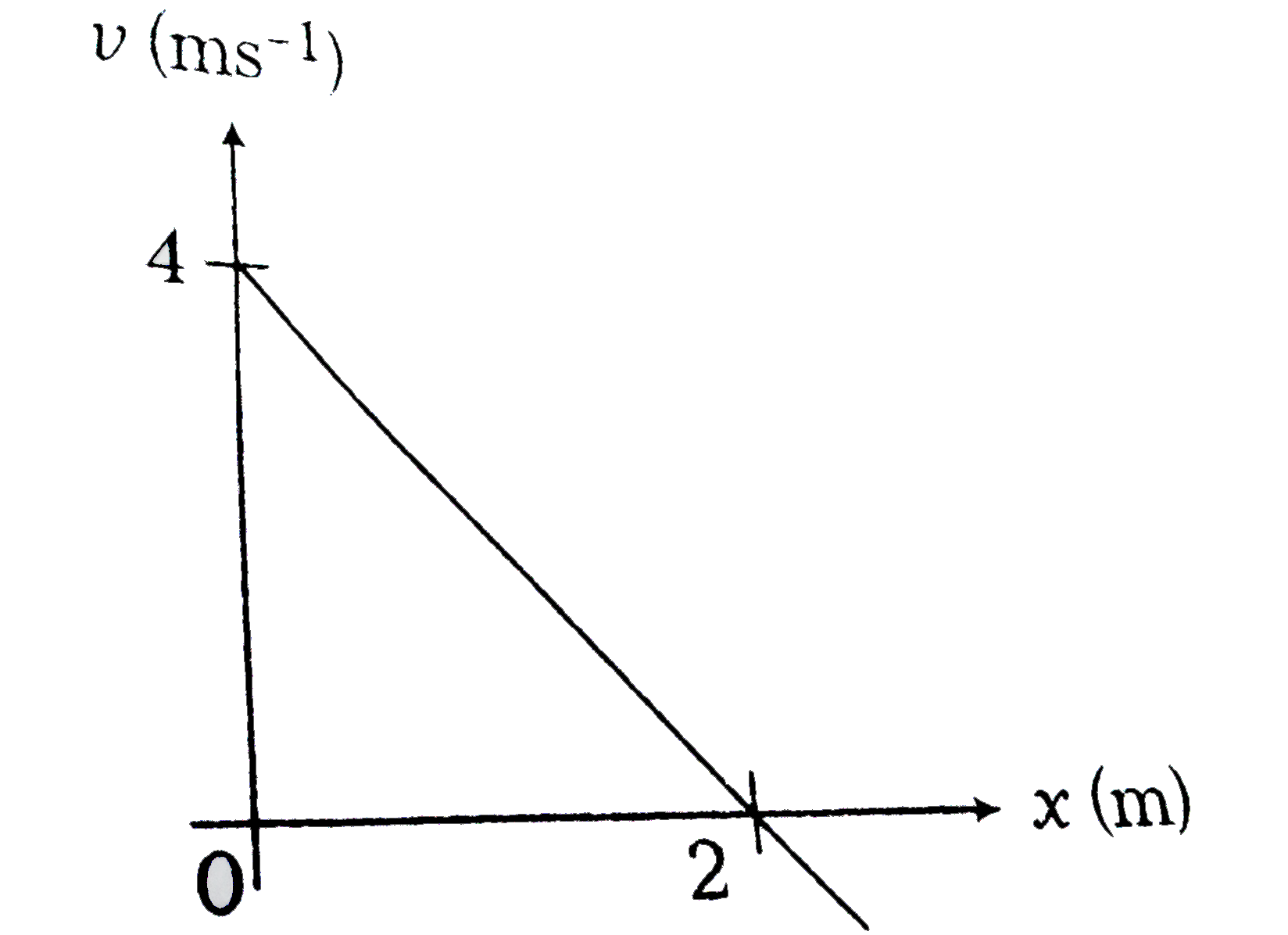The velocity υ of a particle as a function of its position (x) is expressed as υ=√c1−c2x, where c1 and c2 are positive constants. The acceleration of the particle is
c2
−c22
c1−c2
c1+c22
The correct Answer is:B
To find the acceleration of the particle given the velocity as a function of position, we start with the equation:
v=√c1−c2x
Step 1: Square the velocity equation
To eliminate the square root, we square both sides:
v2=c1−c2x
Step 2: Rearrange the equation
Rearranging the equation gives us:
c2x=c1−v2
Step 3: Differentiate with respect to time
To find acceleration, we need to express it in terms of velocity and position. We know that acceleration a can be expressed as:
a=dvdt
Using the chain rule, we can write:
a=dvdx⋅dxdt=dvdx⋅v
Step 4: Differentiate v with respect to x
Now we need to find dvdx. From the equation v2=c1−c2x, we can differentiate both sides with respect to x:
2vdvdx=−c2
Step 5: Solve for dvdx
Rearranging gives us:
dvdx=−c22v
Step 6: Substitute dvdx into the acceleration equation
Now substituting dvdx back into the equation for acceleration:
a=(−c22v)v=−c22
Conclusion
Thus, the acceleration of the particle is:
a=−c22
To eliminate the square root, we square both sides:
Rearranging the equation gives us:
To find acceleration, we need to express it in terms of velocity and position. We know that acceleration a can be expressed as:
Now we need to find dvdx. From the equation v2=c1−c2x, we can differentiate both sides with respect to x:
Rearranging gives us:
Now substituting dvdx back into the equation for acceleration:
Thus, the acceleration of the particle is:
Topper's Solved these Questions
- MOTION IN A PLANEBOOK - DC PANDEY ENGLISHCHAPTER - MOTION IN A PLANEEXERCISE - (B) Meical entrance special format questions (Assertion and reason)
19 Videos
- MOTION IN A PLANEBOOK - DC PANDEY ENGLISHCHAPTER - MOTION IN A PLANEEXERCISE - (B) Meical entrance special format questions (Mathch the columns)
6 Videos
- MOTION IN A PLANEBOOK - DC PANDEY ENGLISHCHAPTER - MOTION IN A PLANEEXERCISE - Check point 3.7
15 Videos
- MOTIONBOOK - DC PANDEY ENGLISHCHAPTER - MOTIONEXERCISE - Medical entrances gallery
19 Videos
- PROJECTILE MOTIONBOOK - DC PANDEY ENGLISHCHAPTER - PROJECTILE MOTIONEXERCISE - Level - 2 Subjective
10 Videos
Similar Questions
A particle is executing SHM and its velocity v is related to its position (x) as v2+ax2=b, where a and b are positive constant. The frequency of oscillation of particle is
View SolutionA particle of unit mass is moving along x-axis. The velocity of particle varies with position x as v(x). =αx−β (where α and β are positive constants and x>0 ). The acceleration of the particle as a function of x is given as
View SolutionThe differential equation which represents the family of curves y=c1ec2x where c1andc2 are arbitary constants is
View SolutionThe position x of particle moving along x-axis varies with time t as x=Asin(ωt) where A and ω are positive constants. The acceleration a of particle varies with its position (x) as
View SolutionThe position of a particle as a function of time t, is given by x(t)=at+bt2−ct3 where a,b and c are constants. When the particle attains zero acceleration, then its velocity will be :
View SolutionA particle of mass m is present in a region where the potential energy of the particle depends on the x-coordinate according to the expression U=ax2−bx, where a and b are positive constant. The particle will perform.
View SolutionThe differential equaiotn which represents the family of curves y=C1eC2x, where C1 and C2 are arbitrary constants, is
View SolutionA particle moves in a circular path such that its speed 1v varies with distance s as v=√s, where ∝ is a positive constant. Find the acceleration of the particle after traversing a distance s.
View SolutionThe position of a particle is given by
x=2(t−t2)
where t is expressed in seconds and x is in metre.
The acceleration of the particle is
View SolutionThe velocity (υ) of a particle moving along X-axis varies with its position x as shown in figure. The acceleration (a) of particle varies with position (x) as

View Solution
